Two years ago, on October 7, Israel declared a state of war in response to cross-border attacks by members of Hamas. Since then, the Benjamin Netanyahu-led government and the Israeli Defence Forces have heavily and strategically bombarded large portions of the Gaza Strip claiming to rid the region of Hamas’ centres of command.
Through two years of violent assault, the human death toll has climbed to 67,160 as of October 6, 2025, as per the Palestinian Ministry of Health. A Reuters examination in March of an earlier Gaza Health Ministry list of those killed showed that more than 1,200 families were completely wiped out, including one family of 14 people.
Also read | Israel’s war on Gaza: Life and Death
The city of Gaza has also crumbled, with the same buildings often facing repeated airstrikes and bombardments. As per a preliminary damage assessment by UNESCO on August 18, 2025, verified damage has been sustained by “110 sites since 7 October 2023 — 13 religious sites, 77 buildings of historical and/or artistic interest, 3 depositories of movable cultural property, 9 monuments, 1 museum and 7 archaeological sites”.

“Crimes against or affecting cultural heritage often touch upon the very notion of what it means to be human, sometimes eroding entire swaths of human history, ingenuity, and artistic creation.”International Criminal Court’s Policy on Cultural Heritage
Essentially, Israel’s offensive action has extended to include Gaza’s rich civilizational history. Israel, despite being a signatory to the 1954 Hague Convention for the Protection of Cultural Property in the Event of Armed Conflict, advanced and enhanced the erasure of civilian history in Gaza.
Here is a fraction of the cultural and civilian heritage that has also become victim to Israel’s annexationist actions:
Great Omari Mosque
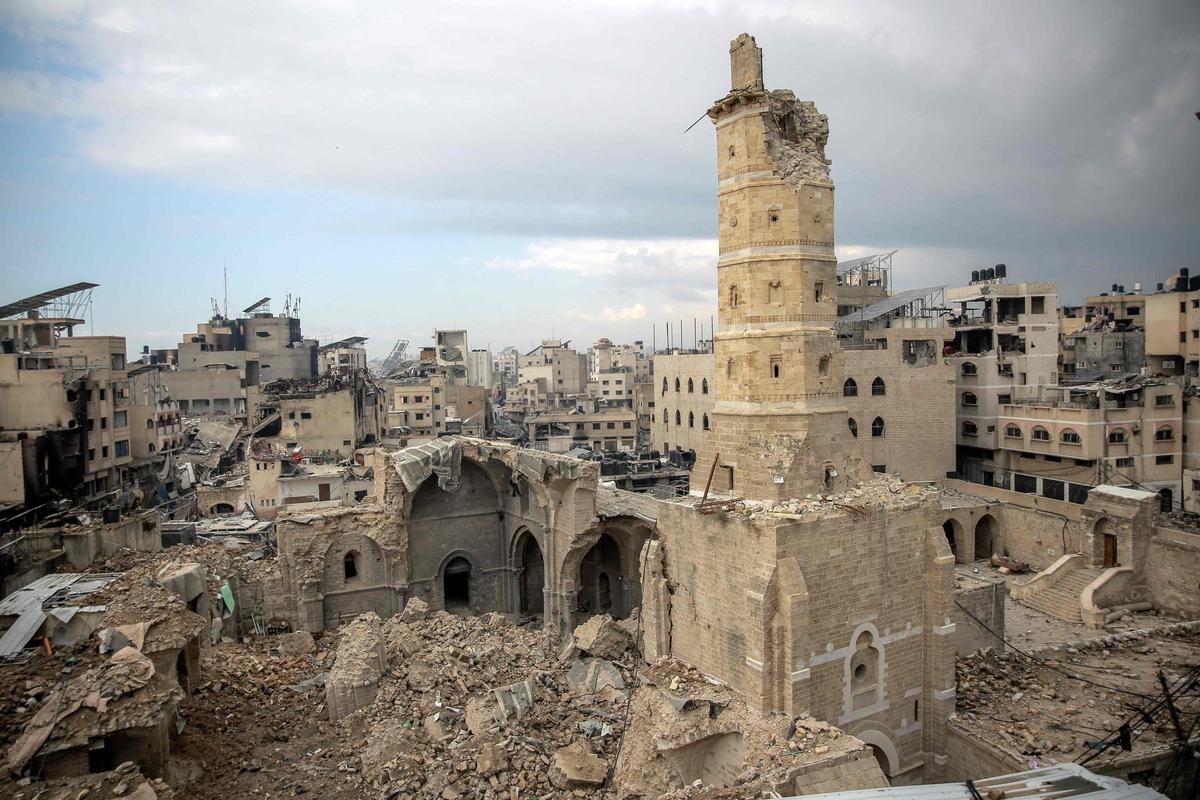
This picture taken on January 5, 2024, shows Gaza City’s Omari Mosque, the oldest mosque in Gaza, damaged in Israeli bombardment.
| Photo Credit:
AFP
Also known as the Great Mosque of Gaza, the Great Omari Mosque is the second-oldest mosque in Palestine. Located in the Daraj neighbourhood of Gaza City, it is named after Umar ibn al-Khattab, the second Rashidun caliph. The geographical site of the mosque has stood as a testament to Gaza’s change in fortune and sovereignty. Prior to the mosque being constructed in 7th century, the site hosted a temple, and then a Byzantine Church for 200 years until the Islamic conquest. During the Crusades, a church was again erected in its place, before the Mamluks regained control of Gaza city, and converted the structure back to a mosque. The mosque covers an area of 4,100 square meters, featuring inscriptions and decorations from the Mamluk and Ottoman eras. The structure sustained significant damage in Israeli attack on December 8, 2023.

Al- Qissariya Market
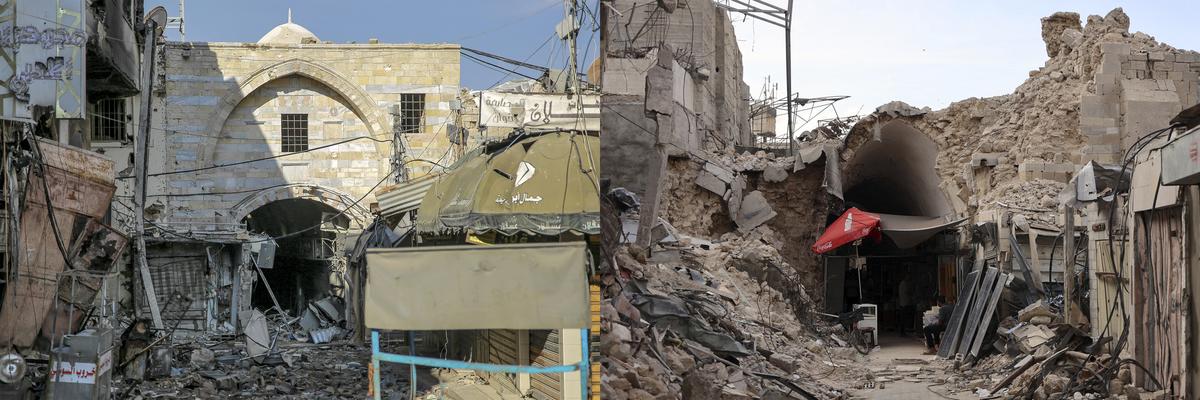
This combination of pictures shows (L) Gaza City’s Qissariya Gold Market (Caesarea Market) after damage in Israeli bombardment on January 5, 2024, and (R) the same building after further damage on September 22, 2024.
| Photo Credit:
AFP
Lying adjacent to the Great Omari Mosque in the Daraj neighbourhood is the Al-Qissariya Market. It was established during one of the most prosperous times in history for Gaza, when the Mamluk dynasty was in power in the 14th century. With most merchants dealing in gold, the market is also commonly known as the “Gold Market”. The market’s traditional characteristics are marked by narrow lanes hosting tiny shops as small as 3-5 metres in width. A gothic-style archway with a high-vaulted ceiling had invited Gazans for centuries, before the market was destroyed in the same aerial strike that damaged the Great Omari Mosque in December 2023.
The Church of Saint Porphyrius
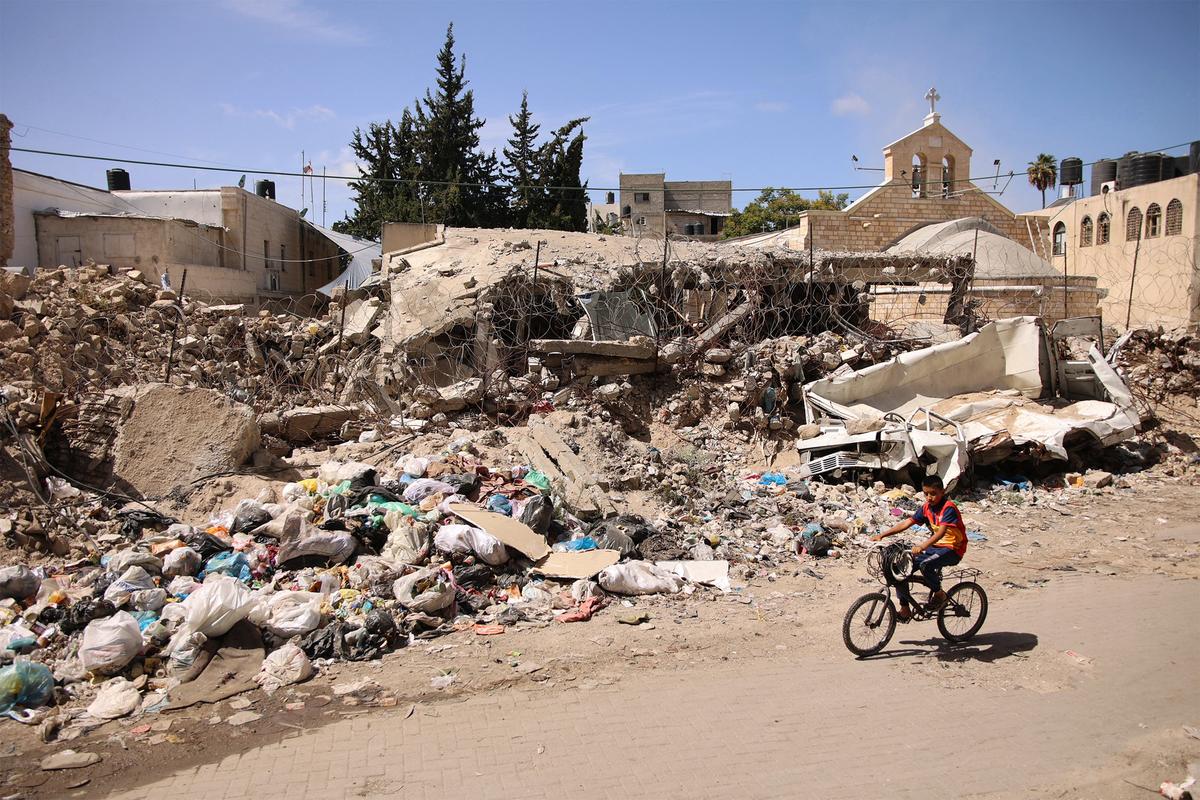
This picture taken on September 22, 2024, shows a view of the destroyed annex of the 12th-century Greek Orthodox Church of St Porphyrios (Porphyrius) in Gaza City.
| Photo Credit:
AFP
One of the oldest structures in Gaza City, the Church of Saint Porphyrius is a Greek Orthodox church located in the Zaytoun neighbourhood. The earliest structure of the church was built in the Byzantine ages in the early 5th century, before it was converted into a mosque in the 7th century. During the Crusades of the 12th century, the structure was reconverted to a church and has remained so since then. The church is named after Saint Porphyrius and houses his shrine. A thick-walled structure, the church’s main hall is supported by stone columns. In October 2023, just weeks after Israel declared war, several hundred displaced Palestinians were taking shelter at night within the church’s halls before shrapnel hit the structure. At least 18 Palestinians were killed.

“ Just as Israel is destroying the official memory and records of Palestinians in Gaza through its destruction of Gaza’s archives and landmarks, it is obliterating Palestinian personal lives and private memories, histories, and futures, through bombing and bulldozing graveyards, destroying family records and photographs, wiping out entire multi-generational families, and killing, maiming, and traumatising a generation of children. ”Application of the Convention on the Prevention and Punishment of the Crime of Genocide in the Gaza Strip (South Africa v. Israel)
Pasha’s Palace
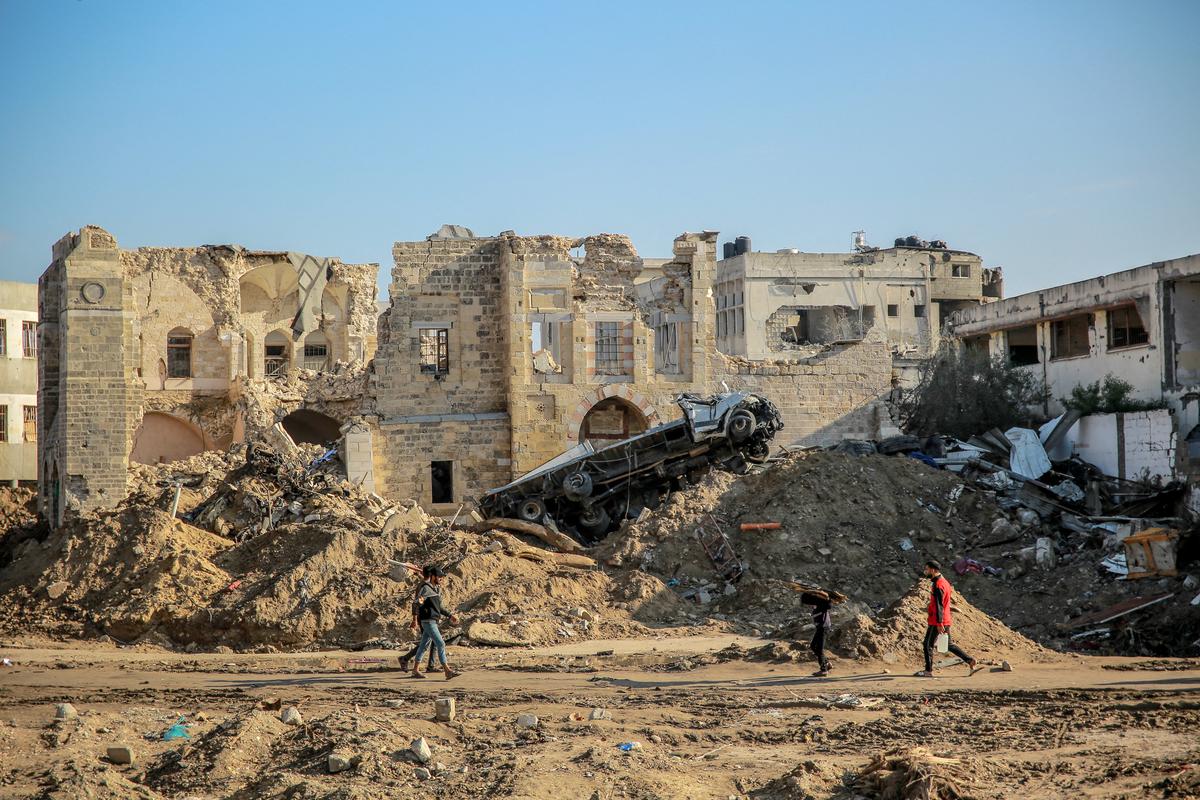
People walk in front of Gaza City’s 17th-century Qasr al-Basha, or the Pasha’s Palace, on January 5, 2024. Also known as the Radwan dynasty castle, it houses a museum and a girls’ school, which is damaged in Israeli bombardment.
| Photo Credit:
AFP
Located in Gaza’s old neighbourhood of Daraj, the Pasha’s Palace is yet another monument from the Mamluk dynasty age, dating back to the 13th century. Later, under Ottoman rule, the building was enhanced with more storeys added to the structure. To the modern Palestinian population, the palace was more popularly known as a museum housing centuries’ worth of historical artefacts from the Greek, Roman, Byzantine, and Islamic periods. Some accounts state that the palace was used as a rest-stop by Napoleon Bonaparte in the late 18th century. It later housed the offices of Gaza’s Governors. According to media reports, the palace’s structure has been reduced to rubble following aerial strikes by Israel in December 2023.

Hamam al-Sammara
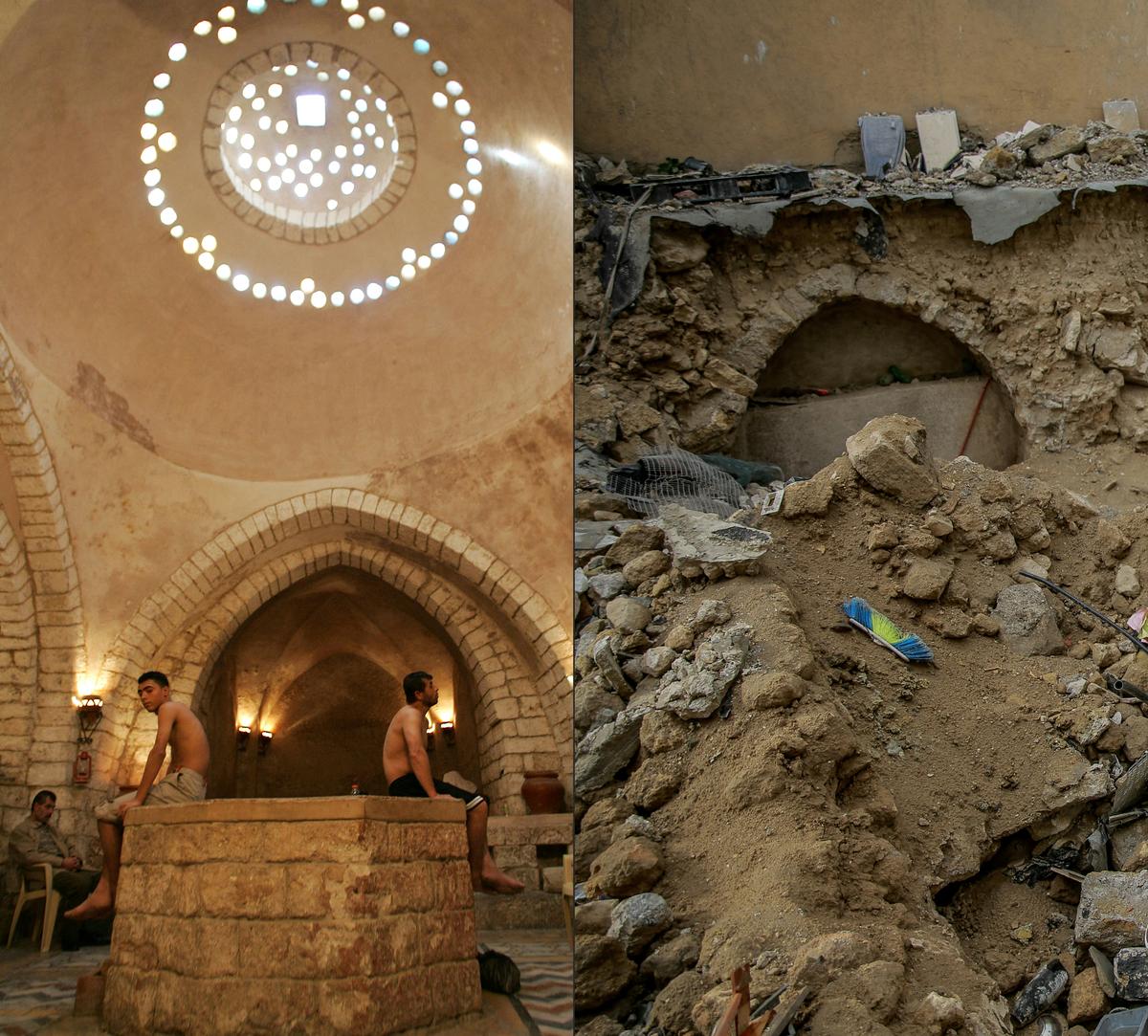
This combination of pictures shows one taken on January 5, 2024 of Gaza City’s historic Hammam Al-Samra, which used to be the only active traditional Turkish bath remaining in Gaza, located in the Zeitun quarter of the Old City before it was destroyed in Israeli bombardment.
| Photo Credit:
AFP
The sole surviving Turkish-style baths, Hamam al-Sammara is located in the Al-Zaytoun neighbourhood. Though there is no definite date of origin available, its first restoration is recorded to have taken place in the 14th century under the Mamluk rule. With a traditional domed roof adorned with coloured glass, the bathhouse preserved a historic architectural style. With the assistance of the United Nations, the structure was restored as recently as March 2023 and remained the only surviving bathhouse in Gaza city. Severe airstrikes by Israel in December 2023 destroyed the structure significantly.
Rashad Al-Shawa Cultural Center
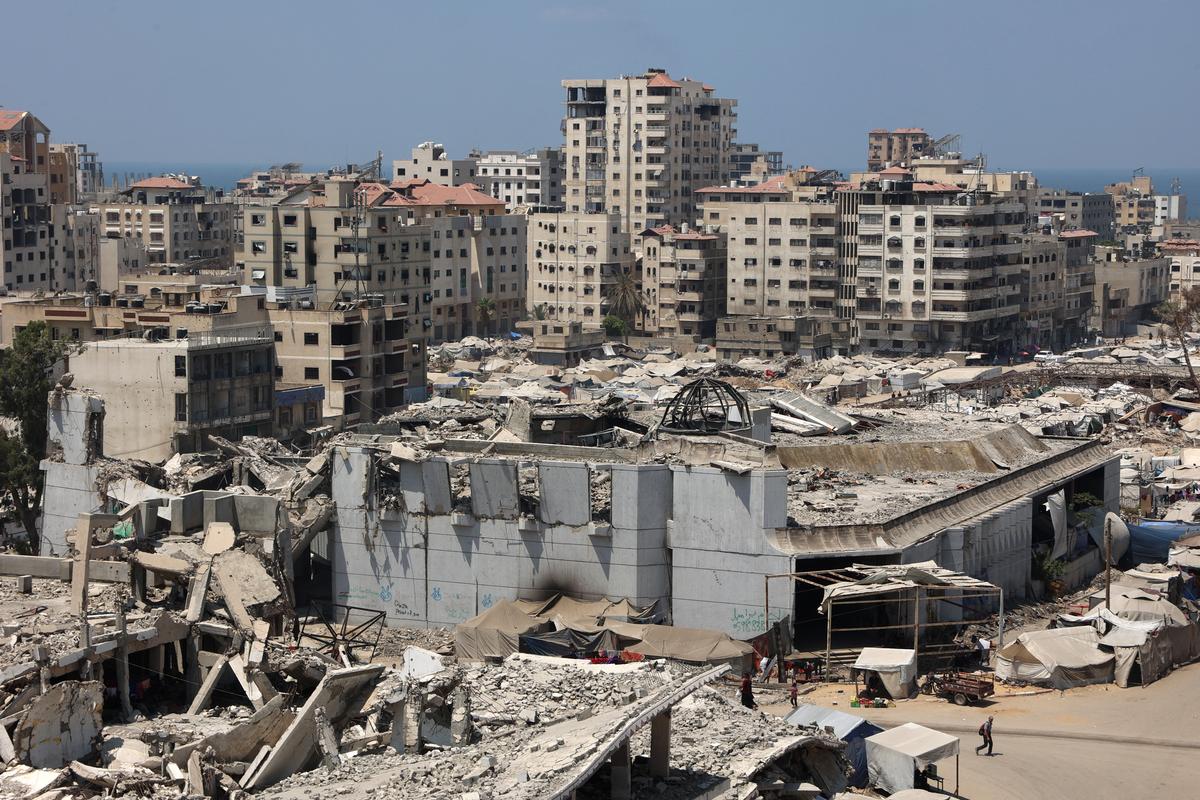
A general view shows the destroyed Rashad al-Shawa cultural center in Gaza City on August 18, 2025.
| Photo Credit:
AFP
For the city of Gaza and its playwrights the Rashad Al-Shawa Cultural Center represented a crucial means of free expression. The two-storey Center built in 1985, and designed by architect Saad Mahfouz, comprised a theatre and a library, and gave Palestinians their first-ever modern cultural space. In 1990, it assumed significance as the venue for peace talks between the then PLO leader Yasser Arafat and former U.S. President Bill Clinton. Over the years, the theater became well-known for nurturing Palestinian playwrights and hosting numerous plays that shed light on the Israeli occupation and apartheid. The Center was destroyed by Israel in a bombardment in November 2023.
Deir al-Balah War Cemetery
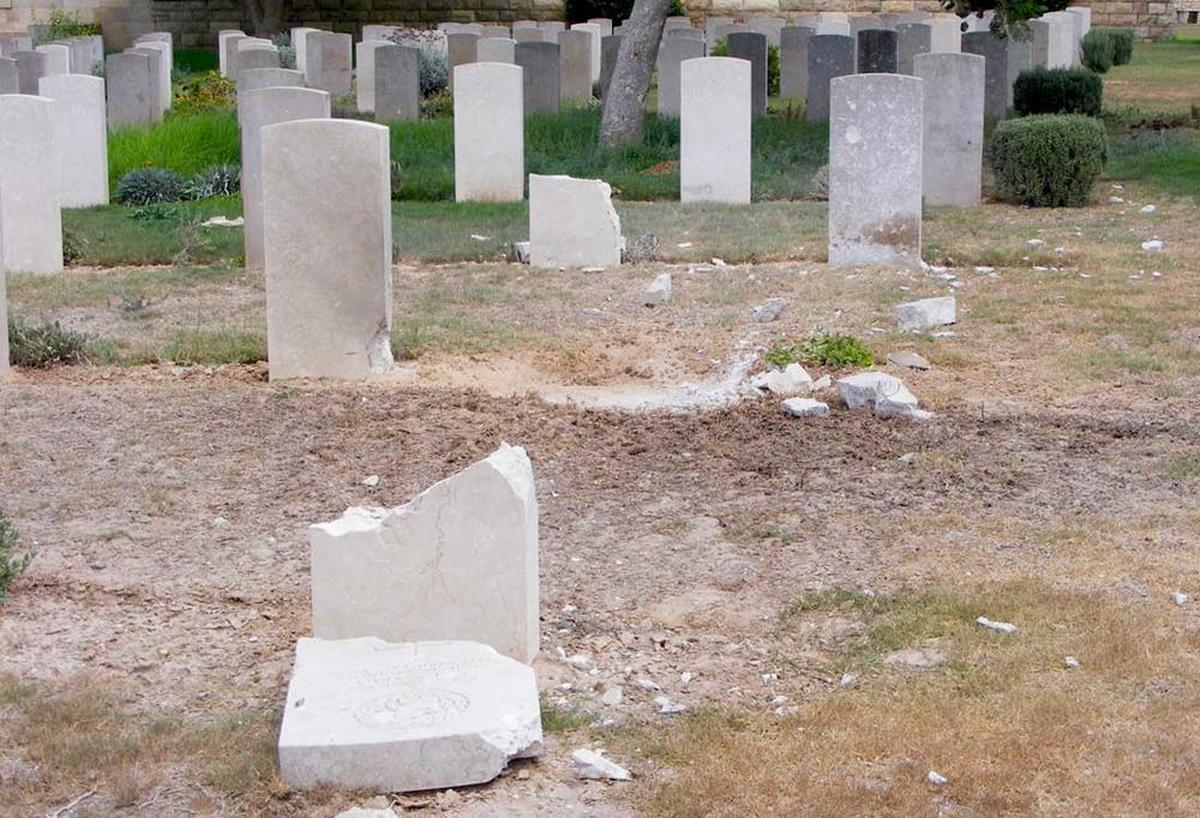
As a result of the ongoing conflict in Gaza, both Gaza War Cemetery and Deir El Balah War Cemetery have suffered extensive damage. Photo: www.cwgc.org
Comprsing 724 graves, the Deir al Balah War Cemetery marks another difficult chapter in Gaza’s history. Part of the Commonwealth War Graves, the cemetery was established towards the end of the First World War in March 1917. The town of Deir al Balah by the time had become a railhead with aerodrome and camps established there.
According to the Commonwealth War Graves Commission, the cemetery remained in use until March 1919. The cemetery contains 724 Commonwealth burials of the First World War, five of which are unidentified. The 64 casualties buried in the Indian Section are commemorated on panels in the cemetery. There are also ten war graves of other nationalities, two being unidentified. In an update following the declaration of war in October 2023, the Commission said the cemetery had suffered extensive damage, with approximately 10% of the headstones sustaining damage. “Memorials with reported damage are the Hindu Memorial, the Sikh Memorial and the Muslim Memorial.”

Al-Ahli Arab Baptist Hospital
Debris of a building inside the Al-Ahli Arab Baptist Hospital, after it was hit by Israeli missiles on April 13, 2025. Patients were evacuated following a call from someone who identified himself as an Israeli security.
| Photo Credit:
Reuters
Founded 1882 and run by the Anglican church, Al Ahli Arab Baptist Hospital is one of the key structures in Gaza that has been repeatedly and severely targetted by Israel. Gaza’s only Christian-run hospital, and the sole provider for cancer-related treatment, is located in the Zeitoun neighbourhood of Gaza City. At several points in Gaza’s history as an occupied territory, the hospital saw itself being the only point of care and refuge. Weeks into the current Israeli offensive, the hospital was struck by an airstrike killing several hundred patients and drawing worldwide condemnation. Israel has deflected blame and pointed its fingers towards a “failed Islamic Jihad rocket launch.” However, over the next two years, Israel has forced the closure of the institution several times and, as recently as April 2025, was struck again under the pretext of targetting a “command and control center used by Hamas.”
Bureij mosaic
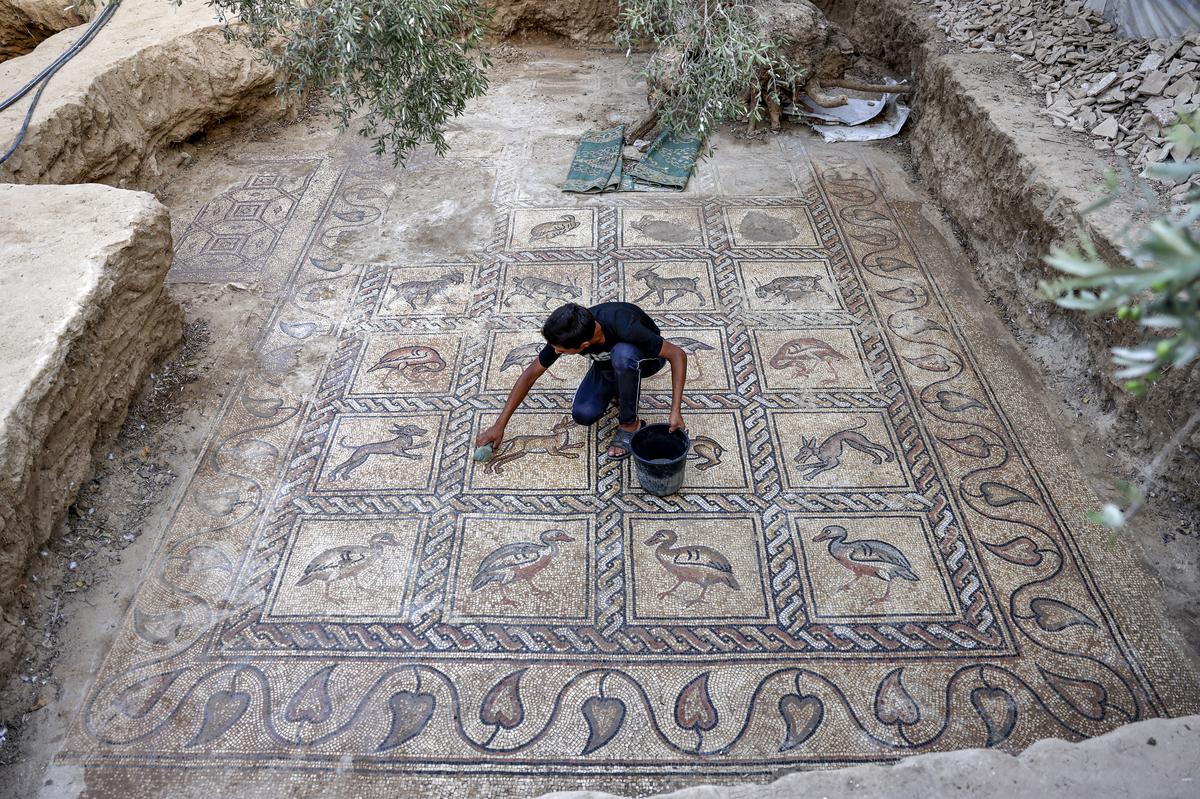
A 2022 photo of Byzantine mosaics dating from the fifth to seventh centuries in Bureij in the central Gaza Strip.
| Photo Credit:
AFP
In 2022, Palestinian farmer Salman al-Nabahin’s routine work led him to chance upon a rare historical find. Just underneath his olive orchard was an almost perfectly preserved ornate Byzantine-era floor mosaic featuring birds and other animals. Believed to date back to somewhere between 5th and 7th centuries, according to UNESCO, the site is estimated to cover an area of over 500 sq. m. with a depth of one meter. Archaeologists quickly swung into action to preserve the site from damage, however as per UNESCO’s update in August, the site is one of the hundreds damaged in the Israeli offensive.
